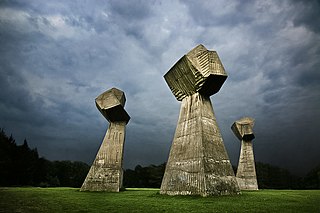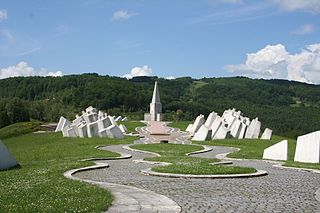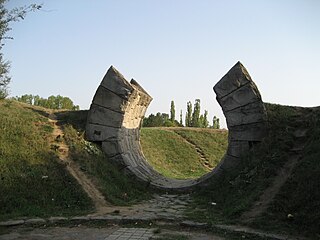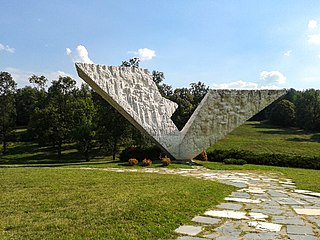 W
WBlack Ćuprija, is a World War II monument in Serbia. It stretches across an area of 472 ha, and it is located 10 km (6.2 mi) from Žabalj near Tisa River, on the road from Novi Sad to Zrenjanin. The monument was designed by Jovan Soldatović in 1962. At a height of 9 meters (30 ft), the sculptures are dedicated to the victims of the Novi Sad raid killed near Žabalj by fascist Hungarian forces occupying Yugoslavia in January 1942. The memorial is listed as one of the Historic Landmarks of Great Importance in Serbia.
 W
WMemorial Park Bubanj is a World War II memorial complex built to commemorate the shooting and execution of more than 10,000 citizens of Niš and people from Serbia and other parts of the country, but according to some data, over 12,000 people, and it is located in Palilula municipality of Niš, Serbia.
 W
WKadinjača is a village, fourteen kilometers from the city of Užice, Serbia, on the route of the highway Užice – Bajina Bašta. It is famous for its memorial of Kadinjača.
 W
WMemorial Park Jajinci is located on the territory of Belgrade municipality Voždovac, on the 11th kilometre on the way to the Аvala mountain. It was built in the location of the military shooting range used by the Armed Forces of the Kingdom of Yugoslavia, and which during the Second World War became the place of the terrible suffering of the innocent population on the territory of the occupied Serbia.
 W
WThe Monument to the Serbian and Albanian Partisans honors the Albanian and Serbian partisans from Kosovo and Metohija who died in World War II in Yugoslavia from 1941–1945. Erected in 1973, the monument is on a promontory named Miner’s Hill, located above Mitrovica, Kosovo. Its creator was architect Bogdan Bogdanovich.
 W
WSlobodište, also known as Mount Bagdala near Kruševac, is the place where the shootings of nearly 1,650 people, mainly Partisans, Chetniks, and Roma occurred during the German occupation of Serbia.
 W
WOctober in Kragujevac Memorial Park, also known as Šumarice Memorial Park, is the site near Kragujevac, Serbia of the execution of an estimated 2,800 men and boys of the town by the German occupation forces on October 21, 1941, during World War II. Among the dead were hundreds of high school students. The 21 October Museum was designed by architect Ivan Antić is located at the site of the massacre.